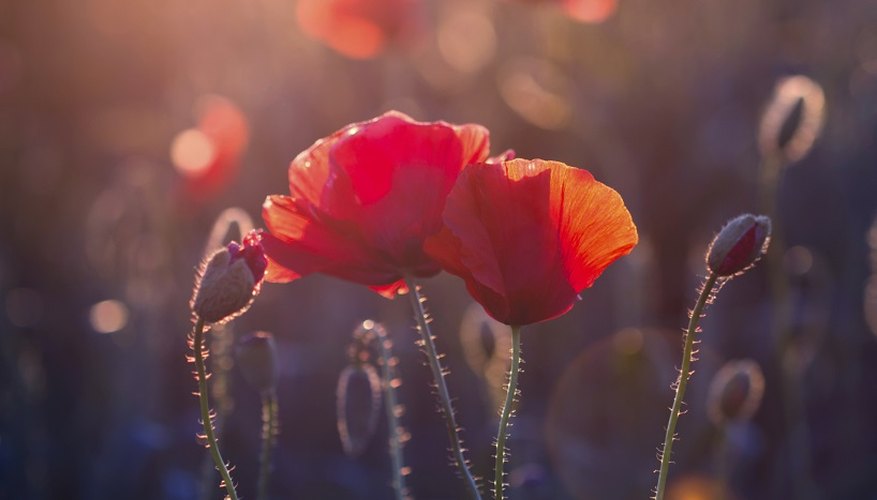There are 250 species of poppies in the poppy family. Each one is characterised by appearance, location and other distinguishing factors. The poppy plant is well-known to most children. Poppy facts for kids can be used to inform students in a classroom setting or out in nature. The plant grows in the wild, but can also be found in many homes and public gardens.
Petals
A matured oriental poppy plant may bear several dozen blossoms if planted in fertile soil. The poppy flower has four to six petals of varying colours. Some are solid colours and others have markings. Colours range from white to dark red, with bright yellows, vibrant oranges and calm tones of pink. Before blooming the petals are crumpled in the bud and as blooming finishes the petals often lie flat before falling away. After the petals fall off, an attractive wheel-patterned seed pod is left. Harsh winds or rains can easily harm these delicate petals.
- A matured oriental poppy plant may bear several dozen blossoms if planted in fertile soil.
Pollen
Pollen colours vary depending on the type of poppy. The pollen of the oriental poppy, for example, is dark blue. The pollen of the field poppy, also known as the corn poppy, can also be dark blue or have more grey tones. Poppies are pollinated by birds, bees and certain insects, making them a great addition to a garden.
- Pollen colours vary depending on the type of poppy.
- The pollen of the field poppy, also known as the corn poppy, can also be dark blue or have more grey tones.
Symbolism
Poppies have long been used as a symbol of both sleep and death. In Greek and Roman mythology, poppies were used as offerings to the dead. Poppies are used as emblems on tombstones to symbolise eternal sleep; similarly red poppies on battlefields symbolise the blood of fallen soldiers. In The Wonderful Wizard of Oz, a magical poppy field threatens to make the characters sleep forever. In Classical mythology the bright scarlet colour of some poppies signifies the promise of resurrection after death.
- Poppies have long been used as a symbol of both sleep and death.
- In Classical mythology the bright scarlet colour of some poppies signifies the promise of resurrection after death.
Uses
Opium is derived from the opium poppy. Historically it was used medicinally for pain relief and sedation. Today the opium poppy is one of the most cultivated medicinal herbs, and it is used as an ingredient in controlled quantities for various medications. Poppy seeds are also derived from the poppy plant. They are used in cooking for seasoning and baking as well as culinary decoration. The juice from the root of a California poppy is used for toothaches. The poppy flower itself is also simply used as decoration in gardens and as an ornamental plant.
- Opium is derived from the opium poppy.
- Today the opium poppy is one of the most cultivated medicinal herbs, and it is used as an ingredient in controlled quantities for various medications.
